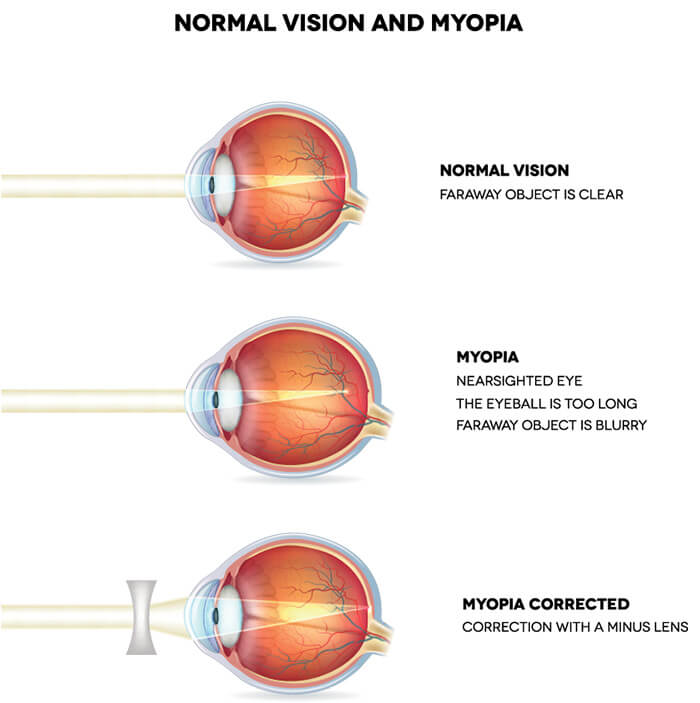Myopia or “nearsightedness” occurs when the eyeball grows too long or the cornea becomes too curved. As a result, the light entering the eye isn’t focused correctly, and distant objects appear blurry.
The amount of myopia that a child has often increases each year. This increase is typically seen between 9 and 18 years of age. Some children develop myopia at an earlier age and some progress more quickly than the expected rate.
While the exact cause of myopia is unknown, evidence shows that if one or both parents are nearsighted, there is an increased chance their children will be nearsighted.
Even though the tendency to develop myopia may be genetic, its actual development could be affected by how a person uses his or her eyes. Some studies show that people who have limited exposure to outdoor sunlight or an increased amount of reading and near work may be more likely to develop myopia.
Myopia is associated with an increased risk of eye diseases such as retinal detachments, cataracts, macular degeneration and glaucoma. Typically, the higher the myopia, the greater the risk of developing these conditions, which is why there is a strong interest in attempting to control its progression.
While myopia cannot be reversed, the goal of treatment is to keep it from getting worse. The following are treatment options that our eye doctors may discuss with you:

1275 Sadler Way, Suite #103
Fairbanks, Alaska 99701
Fax (855) 729-1235
Phone (907) 888-8174
Directions